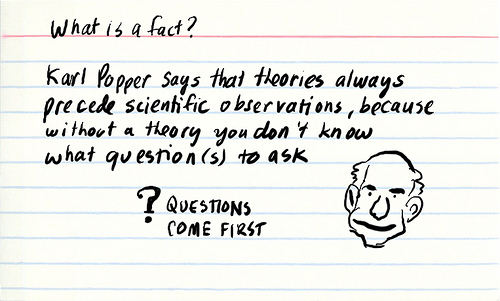
As we’ve discussed, brand journalism is frequently confused with content marketing but the two are different.
Brand journalism was once commonly called “custom content.” For a long time “real” journalists turned up their noses at such assignments. Sure, these assignments may have paid better than the local newspaper but wasn’t it all just marketing? Wasn’t the price a journalist paid that of the sin against “real” journalism? Where is the journalistic integrity, went the thinking, if the news sponsor was a merchant, not a newspaper? (Forgetting, for the moment, that all newspapers answer to their advertiser dollars?)
In reality, quality brand journalism follows cues from traditional journalism in pursuit of news stories. It all starts with the five W’s and single H: who, what, when, where, why, and how. Or, as Jack Webb’s character, Sgt. Joe Friday on the classic television show Dragnet, liked to say: “Just the facts, ma’am.”
Except …
Sgt. Joe Friday never said that phrase on the show, according to Snopes.com. Sure, legions of “Nick at Nite” viewers think he did and the phrase has entered popular consciousness. The same confusion over origin and meaning exists with brand journalism.
Field evolving
In short, the facts are changing.
Like this misappropriation of a cultural phrase, brand journalism is too frequently dumped into the category of, say, print news, when in fact brand journalism is still evolving and enveloping other media.
Witness the mobile-screen debut of the first episode of //HITRECORD, a completely crowd-sourced entertainment show. It’s notable that this show will debut on television after its debut online and on mobile devices. Similarly, journalism — whether produced for brands or for traditional outlets — is changing delivery channels. Shows like //HITRECORD invite us to consider how journalism, too, is changing in terms of contribution.
Shifting perception
That’s not all. Let’s go back briefly to the shifting perception of brand journalism’s origin and meaning.
Origin: Brand journalism isn’t simply marketing, like custom content of yore. Instead, it uses journalistic technique to compare and contrast, to study, and to sometimes dissect the brand or its products in industry context in a way shunned by traditional marketing but expected by today’s consumers.
Meaning: Brand journalism isn’t necessarily yoked to layers of bureaucratic approval before production. By its very nature the reporting follows the news curve. The course of production to output is streamlined and fast. Since brand news can reach customers quickly it can become a more trusted and valuable resource.
So, in summary:
- Brand journalism investigates news using the traditional WWWWWH format.
- Brand journalism isn’t necessarily tied to one medium (e.g., written word), and in fact is quickly becoming more of a multimedia medium (e.g., a blog post with an embedded video, as a simple example).
- Brand journalism relies on multiple contributors, and, like other crowd-sourced media, does best when guided by experts. However, there is increasingly room for, and validation for, material produced by so-called amateurs (e.g., see CNN’s iReport, which merges journalistic reporting with eyewitness accounts).
- Origin and meaning can be debated by academics, but brand journalism’s ability to get content to qualified prospects quickly, while simultaneously offering them something of value (news), makes brand journalism an agile tool.
That’s just the brand journalism facts, and then some.
Image: Dave Gray